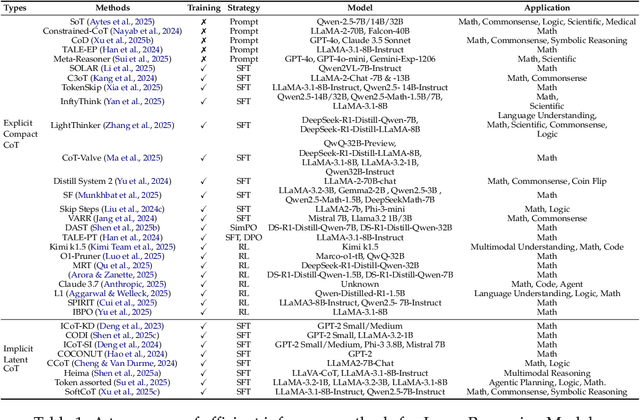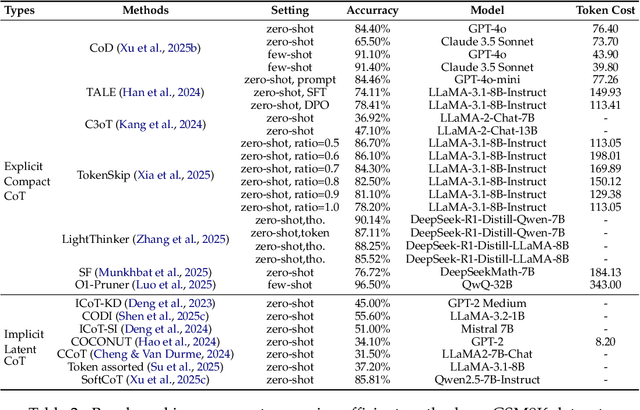Jiaheng Zhang
TrojanTO: Action-Level Backdoor Attacks against Trajectory Optimization Models
Jun 15, 2025Abstract:Recent advances in Trajectory Optimization (TO) models have achieved remarkable success in offline reinforcement learning. However, their vulnerabilities against backdoor attacks are poorly understood. We find that existing backdoor attacks in reinforcement learning are based on reward manipulation, which are largely ineffective against the TO model due to its inherent sequence modeling nature. Moreover, the complexities introduced by high-dimensional action spaces further compound the challenge of action manipulation. To address these gaps, we propose TrojanTO, the first action-level backdoor attack against TO models. TrojanTO employs alternating training to enhance the connection between triggers and target actions for attack effectiveness. To improve attack stealth, it utilizes precise poisoning via trajectory filtering for normal performance and batch poisoning for trigger consistency. Extensive evaluations demonstrate that TrojanTO effectively implants backdoor attacks across diverse tasks and attack objectives with a low attack budget (0.3\% of trajectories). Furthermore, TrojanTO exhibits broad applicability to DT, GDT, and DC, underscoring its scalability across diverse TO model architectures.
Efficient Reasoning via Chain of Unconscious Thought
May 26, 2025Abstract:Large Reasoning Models (LRMs) achieve promising performance but compromise token efficiency due to verbose reasoning processes. Unconscious Thought Theory (UTT) posits that complex problems can be solved more efficiently through internalized cognitive processes. Inspired by UTT, we propose a new reasoning paradigm, termed Chain of Unconscious Thought (CoUT), to improve the token efficiency of LRMs by guiding them to mimic human unconscious thought and internalize reasoning processes. Concretely, we first prompt the model to internalize the reasoning by thinking in the hidden layer. Then, we design a bag of token-efficient strategies to further help models reduce unnecessary tokens yet preserve the performance. Our work reveals that models may possess beneficial unconscious thought, enabling improved efficiency without sacrificing performance. Extensive experiments demonstrate the effectiveness of CoUT. Remarkably, it surpasses CoT by reducing token usage by 47.62% while maintaining comparable accuracy, as shown in Figure 1. The code of CoUT is available at this link: https://github.com/Rohan-GRH/CoUT
Silent Leaks: Implicit Knowledge Extraction Attack on RAG Systems through Benign Queries
May 21, 2025Abstract:Retrieval-Augmented Generation (RAG) systems enhance large language models (LLMs) by incorporating external knowledge bases, but they are vulnerable to privacy risks from data extraction attacks. Existing extraction methods typically rely on malicious inputs such as prompt injection or jailbreaking, making them easily detectable via input- or output-level detection. In this paper, we introduce Implicit Knowledge Extraction Attack (IKEA), which conducts knowledge extraction on RAG systems through benign queries. IKEA first leverages anchor concepts to generate queries with the natural appearance, and then designs two mechanisms to lead to anchor concept thoroughly 'explore' the RAG's privacy knowledge: (1) Experience Reflection Sampling, which samples anchor concepts based on past query-response patterns to ensure the queries' relevance to RAG documents; (2) Trust Region Directed Mutation, which iteratively mutates anchor concepts under similarity constraints to further exploit the embedding space. Extensive experiments demonstrate IKEA's effectiveness under various defenses, surpassing baselines by over 80% in extraction efficiency and 90% in attack success rate. Moreover, the substitute RAG system built from IKEA's extractions consistently outperforms those based on baseline methods across multiple evaluation tasks, underscoring the significant privacy risk in RAG systems.
GuardReasoner-VL: Safeguarding VLMs via Reinforced Reasoning
May 16, 2025Abstract:To enhance the safety of VLMs, this paper introduces a novel reasoning-based VLM guard model dubbed GuardReasoner-VL. The core idea is to incentivize the guard model to deliberatively reason before making moderation decisions via online RL. First, we construct GuardReasoner-VLTrain, a reasoning corpus with 123K samples and 631K reasoning steps, spanning text, image, and text-image inputs. Then, based on it, we cold-start our model's reasoning ability via SFT. In addition, we further enhance reasoning regarding moderation through online RL. Concretely, to enhance diversity and difficulty of samples, we conduct rejection sampling followed by data augmentation via the proposed safety-aware data concatenation. Besides, we use a dynamic clipping parameter to encourage exploration in early stages and exploitation in later stages. To balance performance and token efficiency, we design a length-aware safety reward that integrates accuracy, format, and token cost. Extensive experiments demonstrate the superiority of our model. Remarkably, it surpasses the runner-up by 19.27% F1 score on average. We release data, code, and models (3B/7B) of GuardReasoner-VL at https://github.com/yueliu1999/GuardReasoner-VL/
Geneshift: Impact of different scenario shift on Jailbreaking LLM
Apr 10, 2025Abstract:Jailbreak attacks, which aim to cause LLMs to perform unrestricted behaviors, have become a critical and challenging direction in AI safety. Despite achieving the promising attack success rate using dictionary-based evaluation, existing jailbreak attack methods fail to output detailed contents to satisfy the harmful request, leading to poor performance on GPT-based evaluation. To this end, we propose a black-box jailbreak attack termed GeneShift, by using a genetic algorithm to optimize the scenario shifts. Firstly, we observe that the malicious queries perform optimally under different scenario shifts. Based on it, we develop a genetic algorithm to evolve and select the hybrid of scenario shifts. It guides our method to elicit detailed and actionable harmful responses while keeping the seemingly benign facade, improving stealthiness. Extensive experiments demonstrate the superiority of GeneShift. Notably, GeneShift increases the jailbreak success rate from 0% to 60% when direct prompting alone would fail.
Efficient Inference for Large Reasoning Models: A Survey
Mar 29, 2025


Abstract:Large Reasoning Models (LRMs) significantly improve the reasoning ability of Large Language Models (LLMs) by learning to reason, exhibiting promising performance in complex task-solving. However, their deliberative reasoning process leads to inefficiencies in token usage, memory consumption, and inference time. Thus, this survey provides a review of efficient inference methods designed specifically for LRMs, focusing on mitigating token inefficiency while preserving the reasoning quality. First, we introduce a taxonomy to group the recent methods into two main categories: (a) explicit compact Chain-of-Thought (CoT), which reduces tokens while keeping the explicit reasoning structure, and (b) implicit latent CoT, which encodes reasoning steps within hidden representations instead of explicit tokens. Meanwhile, we discuss their strengths and weaknesses. Then, we conduct empirical analyses on existing methods from performance and efficiency aspects. Besides, we present open challenges in this field, including human-centric controllable reasoning, trade-off between interpretability and efficiency of reasoning, ensuring safety of efficient reasoning, and broader applications of efficient reasoning. In addition, we highlight key insights for enhancing LRMs' inference efficiency via techniques such as model merging, new architectures, and agent routers. We hope this work serves as a valuable guide, helping researchers overcome challenges in this vibrant field\footnote{https://github.com/yueliu1999/Awesome-Efficient-Inference-for-LRMs}.
Sparse Autoencoder as a Zero-Shot Classifier for Concept Erasing in Text-to-Image Diffusion Models
Mar 12, 2025Abstract:Text-to-image (T2I) diffusion models have achieved remarkable progress in generating high-quality images but also raise people's concerns about generating harmful or misleading content. While extensive approaches have been proposed to erase unwanted concepts without requiring retraining from scratch, they inadvertently degrade performance on normal generation tasks. In this work, we propose Interpret then Deactivate (ItD), a novel framework to enable precise concept removal in T2I diffusion models while preserving overall performance. ItD first employs a sparse autoencoder (SAE) to interpret each concept as a combination of multiple features. By permanently deactivating the specific features associated with target concepts, we repurpose SAE as a zero-shot classifier that identifies whether the input prompt includes target concepts, allowing selective concept erasure in diffusion models. Moreover, we demonstrate that ItD can be easily extended to erase multiple concepts without requiring further training. Comprehensive experiments across celebrity identities, artistic styles, and explicit content demonstrate ItD's effectiveness in eliminating targeted concepts without interfering with normal concept generation. Additionally, ItD is also robust against adversarial prompts designed to circumvent content filters. Code is available at: https://github.com/NANSirun/Interpret-then-deactivate.
Navigating the Helpfulness-Truthfulness Trade-Off with Uncertainty-Aware Instruction Fine-Tuning
Feb 17, 2025Abstract:Instruction Fine-tuning (IFT) can enhance the helpfulness of Large Language Models (LLMs), but it may lower their truthfulness. This trade-off arises because IFT steers LLMs to generate responses with long-tail knowledge that is not well covered during pre-training, leading to more informative but less truthful answers when generalizing to unseen tasks. In this paper, we empirically demonstrate this helpfulness-truthfulness trade-off in IFT and propose $\textbf{UNIT}$, a novel IFT paradigm to address it. UNIT teaches LLMs to recognize their uncertainty and explicitly reflect it at the end of their responses. Experimental results show that UNIT-tuned models maintain their helpfulness while distinguishing between certain and uncertain claims, thereby reducing hallucinations.
GuardReasoner: Towards Reasoning-based LLM Safeguards
Jan 30, 2025



Abstract:As LLMs increasingly impact safety-critical applications, ensuring their safety using guardrails remains a key challenge. This paper proposes GuardReasoner, a new safeguard for LLMs, by guiding the guard model to learn to reason. Concretely, we first create the GuardReasonerTrain dataset, which consists of 127K samples with 460K detailed reasoning steps. Then, we introduce reasoning SFT to unlock the reasoning capability of guard models. In addition, we present hard sample DPO to further strengthen their reasoning ability. In this manner, GuardReasoner achieves better performance, explainability, and generalizability. Extensive experiments and analyses on 13 benchmarks of 3 guardrail tasks demonstrate its superiority. Remarkably, GuardReasoner 8B surpasses GPT-4o+CoT by 5.74% and LLaMA Guard 3 8B by 20.84% F1 score on average. We release the training data, code, and models with different scales (1B, 3B, 8B) of GuardReasoner : https://github.com/yueliu1999/GuardReasoner/.
Political-LLM: Large Language Models in Political Science
Dec 09, 2024



Abstract:In recent years, large language models (LLMs) have been widely adopted in political science tasks such as election prediction, sentiment analysis, policy impact assessment, and misinformation detection. Meanwhile, the need to systematically understand how LLMs can further revolutionize the field also becomes urgent. In this work, we--a multidisciplinary team of researchers spanning computer science and political science--present the first principled framework termed Political-LLM to advance the comprehensive understanding of integrating LLMs into computational political science. Specifically, we first introduce a fundamental taxonomy classifying the existing explorations into two perspectives: political science and computational methodologies. In particular, from the political science perspective, we highlight the role of LLMs in automating predictive and generative tasks, simulating behavior dynamics, and improving causal inference through tools like counterfactual generation; from a computational perspective, we introduce advancements in data preparation, fine-tuning, and evaluation methods for LLMs that are tailored to political contexts. We identify key challenges and future directions, emphasizing the development of domain-specific datasets, addressing issues of bias and fairness, incorporating human expertise, and redefining evaluation criteria to align with the unique requirements of computational political science. Political-LLM seeks to serve as a guidebook for researchers to foster an informed, ethical, and impactful use of Artificial Intelligence in political science. Our online resource is available at: http://political-llm.org/.
 Add to Chrome
Add to Chrome Add to Firefox
Add to Firefox Add to Edge
Add to Edge